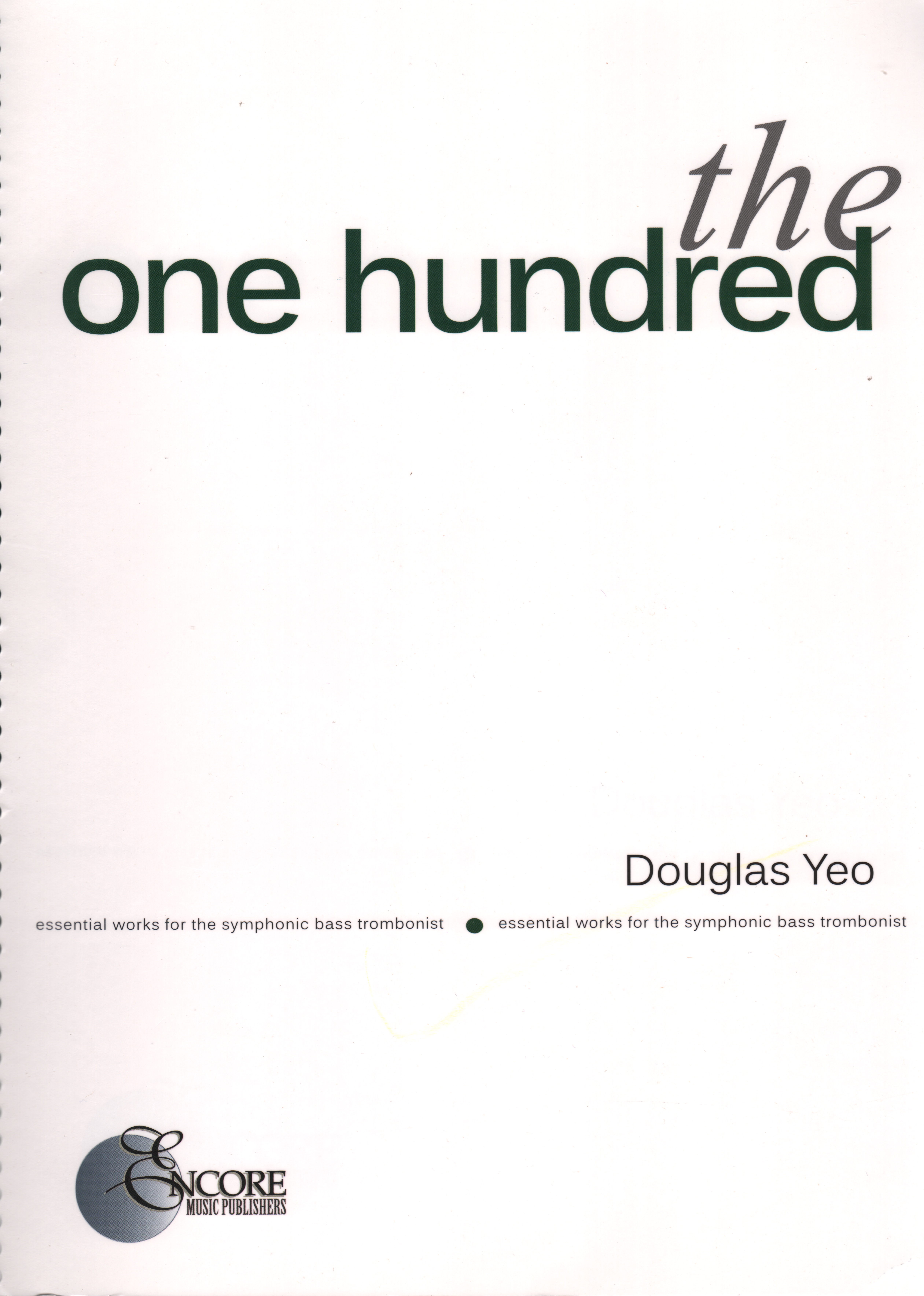Douglas Yeo
 The One Hundred: Essential Works for the Symphonic Bass Trombonist:
The One Hundred: Essential Works for the Symphonic Bass Trombonist:
Maple City, Michigan, United States
Publisher: Encore Music Publishers
Date of Publication: 2016
Language: English
288 pages
Primary Genre: Orchestral Material
Secondary Genre: Study Material - method
 The One Hundred: Essential Works for the Symphonic Bass Trombonist:
The One Hundred: Essential Works for the Symphonic Bass Trombonist: Maple City, Michigan, United States
Publisher: Encore Music Publishers
Date of Publication: 2016
Language: English
288 pages
Primary Genre: Orchestral Material
Secondary Genre: Study Material - method
I feel so honored to have been asked to write a review of this book. I’ve known Doug since his early orchestral career days. He then played in the Baltimore Symphony Orchestra and we shared a mutual chief-conductor, Sergiu Comissiona. This was more than 40 years ago so our contact was mainly by letter. I remember how impressed I was by Doug's erudite writing about our job as orchestral bass trombonists. These letters were always long, interesting, detailed, positive and full of ideas and opinions. Since then we stayed in contact and I followed Doug's career with great interest. I listened to his wonderful playing on many recordings with the Boston Symphony and the Boston Pops and I read all his interesting articles and publications on different platforms. In his preface for the book, Doug gives his reasons for writing this immense reference work. I recognize the situation Doug describes from back in the early 1970s quite well. Back then, we had the orchestral excerpt books by Allen Ostrander and Julian Menken for bass trombone and books by Keith Brown, Alfred Stöneberg, and others for trombone or low brass section excerpts. Many times we had to copy our parts by hand from scores we got from the library. With the advent of the digital age it became much easier to find parts. Some websites even host copies of complete, downloadable orchestral parts. With all these new age possibilities, one might question the need for a book like this. But please read on, because with this book, Doug created an instant classic and must-have on every trombonist’s book shelf. When the book arrived on my doorstep, I browsed quickly through the pages. I remember my first thought was; “Wow, I wish I had this 45 years ago.” After more thorough reading, I even played with the idea of writing the shortest review ever. Something like “The highest recommendation for all bass trombonists. It's just perfect!” But although that properly summarizes this review, it wouldn’t do justice to the effort that was clearly put into this work. The spiral bound book is made of high quality paper and measures 9 by 12 inches. When opened, it can stand flat on your music stand. The smart layout avoids awkward page turns in the middle of the excerpts and the scores are printed in a super clear music font. In addition to the 100 excerpts, plus 9 extra bonus excerpts, extremely interesting commentaries are included. Some examples:
- The Symphonic Audition: Doug’s observations and ideas are all to the point and helpful.
- The Symphonies of Anton Bruckner: Recommendations about dynamics and articulations coming from someone who has so much experience with Bruckner’s music makes this such a bonus.
- A Glossary of selected German Musical terms: Extremely useful if your German isn’t so good!
- Richard Strauss and the Trombone: Interesting background about how Strauss used the bass trombone in his orchestrations and how his sense of humor was borne of his experience as a conductor.
- The Contrabass Trombone and Cimbasso: A short history of these two interesting instruments and their use in the orchestral and opera repertoire.
Reviewer: Ben Van Dijk
Review Published June 11, 2023
Review Published June 11, 2023